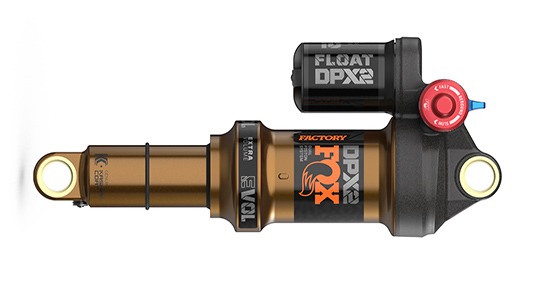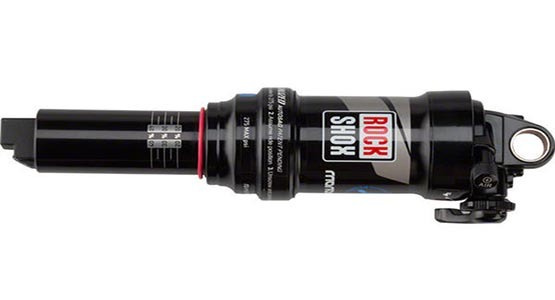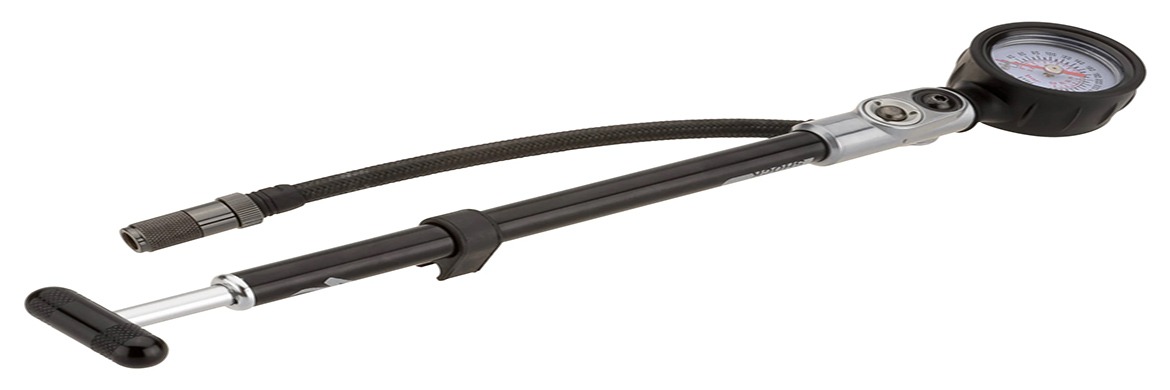
SUSPENSION SETUP
There are some differences in setup between the suspension manufacturers, so you’ll first need to determine the maker of the fork and shock on your bike. All of the bikes sold at WRC feature suspension products from Fox Racing Shocks and Rock Shox – arguably the industry standard for mountain bikes today.
First tool you’re going to need is a shock pump to adjust air pressure in the system. Below are photos of where the air valves are located on your fork and shock. Simply uncap the valve, screw on the pump, and add or remove pressure, using the gauge to set the exact pressure desired.
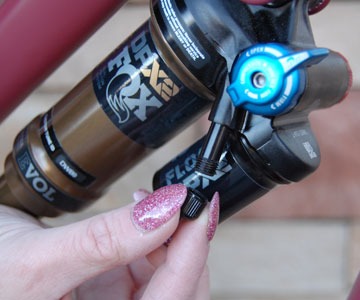
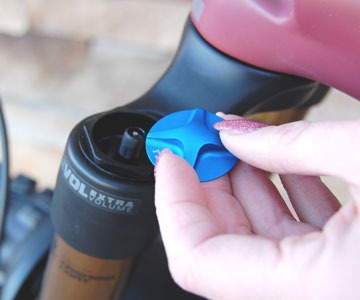
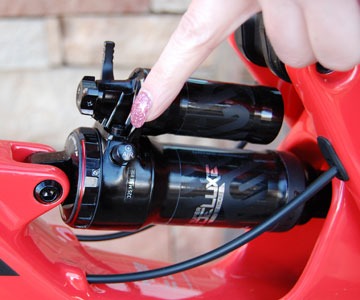
data & set up recommendations
Now for the data. While this setup can certainly be performed with the tried-and-true sag method, the best way to get optimum performance from your suspension is to be more precise and do it by body weight, ride characteristics, and handling preference to customize the tune of your shock and fork. Suspension manufacturers maintain comprehensive tuning guides on their websites that will provide an excellent baseline from which to begin. And that baseline may well be all you ever want to ride with – they are that good! Here are some helpful links:
fox racing shocks
rock shox
bike makers' suspension recommendations
A few of the bike manufacturers also host recommended setup information for their various models on their websites:
Santa Cruz
Santa Cruz maintains this info on each bike’s page. Scroll to the bottom under TECH SUPPORT and select the Shock Setup tab:
juliana
geometry adjustments
So now that you have the air pressure, compression, and rebound setup, some of you need to consider the flip chip technology in your new frame. This applies to these bikes:
Trek mino link
There are high and low settings that adjust the height of the bottom bracket and the steepness of the head angle. In HIGH the BB is lifted 10mm and steepens the headtube angle by a half degree from LOW. Generally speaking, HIGH will be more agile and less stable, with a lower chance of pedal strike, and the opposite is what to expect in LOW. Here’s what Trek has to say about it.
specialized flip chip
The FlipChip at the rear shock eye provides a bottom bracket height change of 7mm and a head tube angle of one-half degree.
Additionally – on the EVO iterations of Stumpjumper – there is an eccentric headset cup with three settings to adjust the headtube angle. There is also another chip in the Horst link (alloy frames) and FlexStay (carbon frames) at the rear axle to get another 7mm of BB adjustment.
And last but not least, there is The MulletLink. The MulletLink is an aftermarket part that will allow you to run a 27.5 rear wheel with a 29 front wheel while retaining the suspension characteristics of the bike. How ‘bout that?
Santa Cruz Flip Chip
The Flip Chip in the chainstay allows for a 10mm +/- adjustment to the chainstay length and another Flip Chip in the dropout allows for 3.5mm +/- adjustment to bottom bracket height. Here’s what Santa Cruz has to say about it, along with plenty more intel.
recommended service intervals
Suspension performance declines gradually. So gradually, in fact, that you may not even be aware that it’s happening. Scroll to the bottom of the page linked here to learn all about how to keep your suspension performing at its best.

